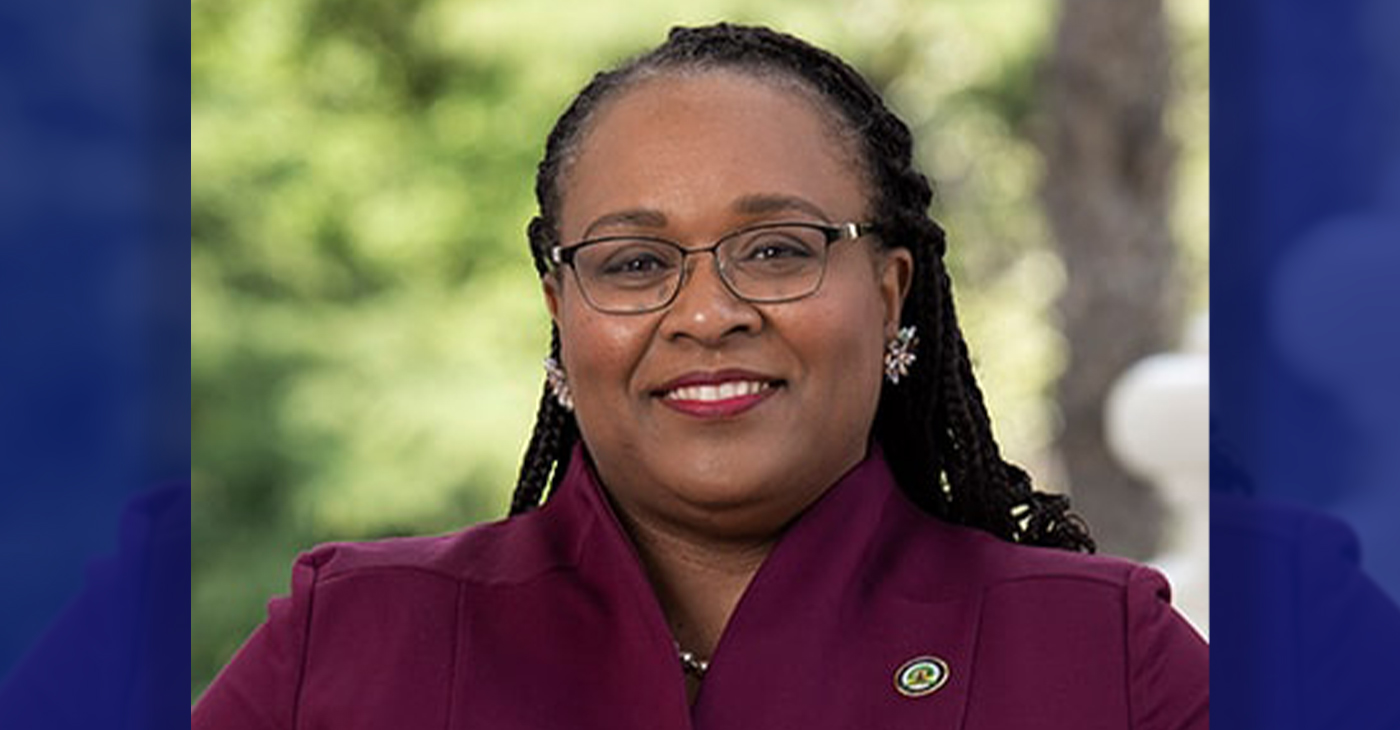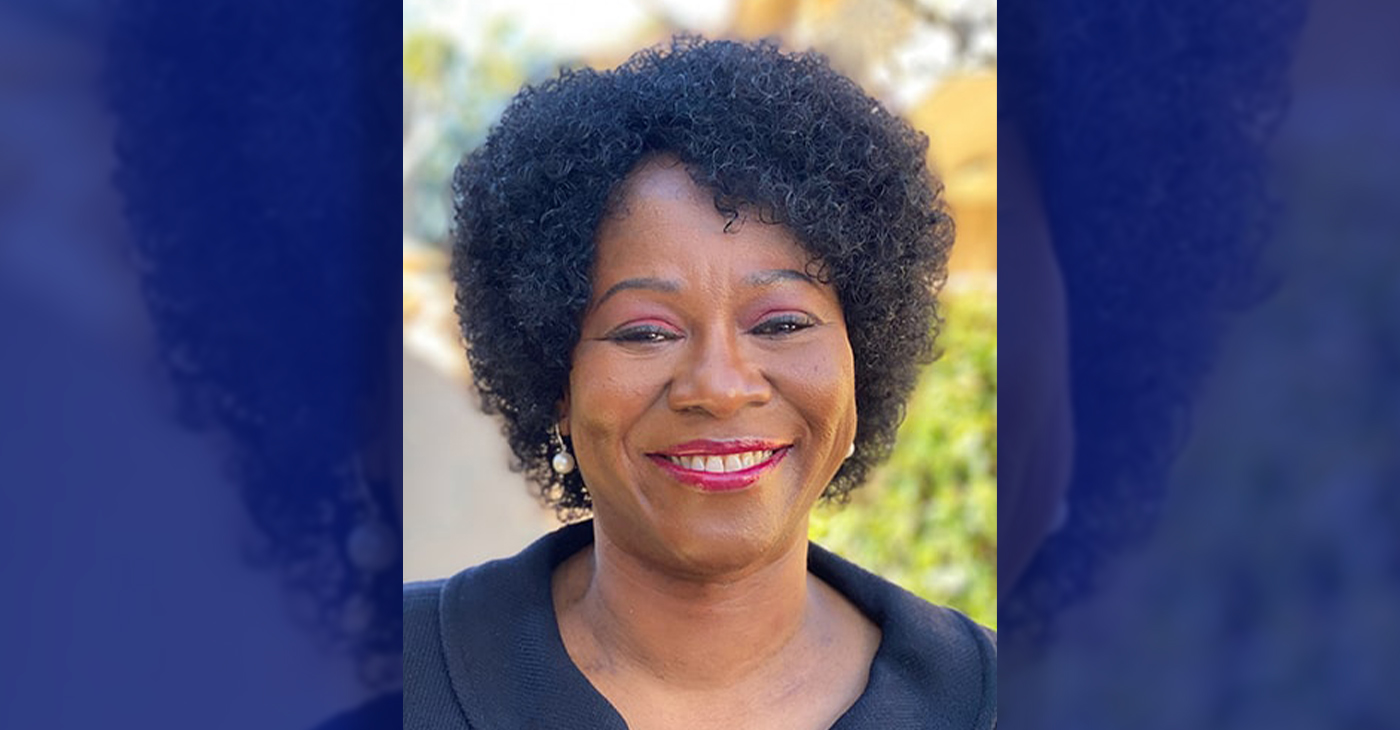Commentary
FILM REVIEW: Glass
NNPA NEWSWIRE — Two hours and nine minutes roll by, and the film is about as frustrating as standing in a TSA line at the airport. Fault the strained writing. Blame the lifeless direction.
By Dwight Brown NNPA News Wire Film Critic


Bruce Willis as David Dunn/The Overseer in “Glass,” written and directed by M. Night Shyamalan.
After viewing Glass, there will be a great debate: Should M. Night Shyamalan stop writing scripts for his films? Should he refrain from directing them? Or maybe both!
Remember The Sixth Sense? Slow, odd movie with a very shocking ending? Shyamalan has gone back to that drawing board and sketched in a hybrid movie that pulls together plotlines from two of his previous films. Unbreakable from the year 2000: David Dunn (Bruce Willis), a security guard, is involved in a catastrophic train accident that kills all onboard, except him. A stranger, Elijah Prince (Samuel L. Jackson), aka Mr. Glass, swears the event was Dunn’s destiny. Split in 2016: Kevin Wendell Crumb (James McAvoy), an evil man with super strength and 23 personalities, kidnaps three girls. The most venomous of his inner demons, The Beast, is vile beyond redemption.
Fast forward to 2019, Philadelphia, PA., Dunn is a street vigilante with inordinate power and becomes clairvoyant when he brushes up against people. He wears a hooded raincoat to hide his identity as he stalks and annihilates criminals who prey on innocent victims. Cops hunt him. His son Joseph (Spencer Treat Clark) supports his efforts.
Prince, a supervillain mastermind with a genetic disorder that leaves his bones so brittle they break like potato chips, is a patient/captive at the Raven Hill Memorial Psychiatric Research Hospital. Crumb? Well he has kidnapped four high school cheerleaders and is toying with them as he summons up the devil inside for a massive slaughter. After some fights, brawls and power struggles, all three wind up at Raven Hill, under the supervision of Dr. Ellie Staple (Sarah Paulson), a psychiatrist who specializes in delusional behavior particularly with people who believe they have super powers.

James McAvoy as The Beast, one of the 23 personalities that reside inside Kevin Wendell Crumb in “Glass,” written and directed by M. Night Shyamalan.
Shyamalan combines the two previous storylines but never ups the ante. The theme in this new venture explores people who have extraordinary abilities and use them for good or evil, a subject that is only mildly intriguing. Instead of making this premise a source of inspiration, his very clunky, heavy-handed script belabors the point. At some juncture, audiences won’t welcome that silly unfulfilling thought patter. Dunn says: “You can’t explain everything away.”
Then there’s the very illogical plot pieces and improbable events that lead to a surprising but limp conclusion. It’s dumb for Dr. Staple to put the three very combustible oddballs in the same facility. Dumber still to allow her staff easy access to their highly secured cells/rooms. Employees hand deliver meals to the devious patients, fraternize and make small talk. They don’t sense impending danger. Also, if the three volatile men are in a true high-security facility, escaping would not be a cakewalk and pushing a panic alarm button would be the first line of defense not the last one.
The overwritten script plods along at a snail’s pace. The first one hour and fifteen minutes is tedious enough to cause a group eye roll. Sloppy indecisive editing (Luke Ciarrocchi and Blu Murray) stymies any rhythm. Shyamalan’s spotty unimaginative direction and Mike Gioulakis’ dull cinematography make fight scenes a snore. None of the action is filmed from an interesting angle and the camera’s placement is often quite awkward. Scenes build to a finale where the audience expects a cataclysmic, visually arresting orgy of a battle. But there is none. Compare the style, direction, cinematography and special effects of The Avengers series, Wonder Woman, The Dark Knight, Deadpool and Black Panther to that in Glass, and the latter’s execution looks even more pitiful.

(from left) Samuel L. Jackson as Elijah Price/Mr. Glass and James McAvoy as Kevin Wendell Crumb/The Horde in “Glass,” written and directed by M. Night Shyamalan.
The three freaks are not all that engaging. Dunn is on the side of good, but with that constant scowl on Bruce Willis’ face, he is a buzzkill. Samuel L. Jackson acts like Samuel L. Jackson: He’s never met a piece of scenery he couldn’t chew up. The most curious performance is that of James McAvoy as the bizarre dude with freaky personalities. McAvoy shifts through them as smoothly as a Porsche gearbox going from park to neutral to drive, to turbo. Each character is distinct: the child, the woman, the hipster and the demon god from hell. McAvoy tries hard, but the direction doesn’t compliment his performance and his scenes drag on too long.
Paulson walks around comatose and is asked to say dumb things and disregard the way a real shrink would deal with patients. Even though what she is doing is a complete ruse, her Dr. Staples doesn’t act accordingly. Anya Taylor-Joy as a former Crumb victim and Charlayne Woodard as Price’s mom fill out the supporting cast without much conviction.
Two hours and nine minutes roll by, and the film is about as frustrating as standing in a TSA line at the airport. Fault the strained writing. Blame the lifeless direction. Question the injudicious editing. Abhor the clumsy cinematography. Condemn that lack of “wow” power special effects and dazzling action scenes.
Glass might cause a stir at Comic Con. Other audiences will likely scratch their heads in unison and hope they don’t get trampled as viewers stampede towards the exits.
Visit NNPA News Wire Film Critic Dwight Brown at DwightBrownInk.com and BlackPressUSA.com.
Activism
Big God Ministry Gives Away Toys in Marin City
Pastor Hall also gave a message of encouragement to the crowd, thanking Jesus for the “best year of their lives.” He asked each of the children what they wanted to be when they grow up.

By Godfrey Lee
Big God Ministries, pastored by David Hall, gave toys to the children in Marin City on Monday, Dec. 15, on the lawn near the corner of Drake Avenue and Donahue Street.
Pastor Hall also gave a message of encouragement to the crowd, thanking Jesus for the “best year of their lives.” He asked each of the children what they wanted to be when they grew up.
Around 75 parents and children were there to receive the presents, which consisted mainly of Gideon Bibles, Cat in the Hat pillows, Barbie dolls, Tonka trucks, and Lego building sets.
A half dozen volunteers from the Big God Ministry, including Donnie Roary, helped to set up the tables for the toy giveaway. The worship music was sung by Ruby Friedman, Keri Carpenter, and Jake Monaghan, who also played the accordion.
Big God Ministries meets on Sundays at 10 a.m. at the Mill Valley Community Center, 180 Camino Alto, Mill Valley, CA Their phone number is (415) 797-2567.
Activism
2025 in Review: Seven Questions for Assemblymember Lori Wilson — Advocate for Equity, the Environment, and More
Her rise has also included several historic firsts: she is the only Black woman ever appointed to lead the influential Assembly Transportation Committee, and the first freshman legislator elected Chair of the California Legislative Black Caucus. She has also been a vocal advocate for vulnerable communities, becoming the first California legislator to publicly discuss being the parent of a transgender child — an act of visibility that has helped advanced representation at a time when political tensions related to social issues and culture have intensified.

By Edward Henderson, California Black Media
Assemblymember Lori D. Wilson (D-Suisun City) joined the California Legislature in 2022 after making history as Solano County’s first Black female mayor, bringing with her a track record of fiscal discipline, community investment, and inclusive leadership.
She represents the state’s 11th Assembly District, which spans Solano County and portions of Contra Costa and Sacramento Counties.
Her rise has also included several historic firsts: she is the only Black woman ever appointed to lead the influential Assembly Transportation Committee, and the first freshman legislator elected Chair of the California Legislative Black Caucus. She has also been a vocal advocate for vulnerable communities, becoming the first California legislator to publicly discuss being the parent of a transgender child — an act of visibility that has helped advanced representation at a time when political tensions related to social issues and culture have intensified.
California Black Media spoke with Wilson about her successes and disappointments this year and her outlook for 2026.
What stands out as your most important achievement this year?
Getting SB 237 passed in the Assembly. I had the opportunity to co-lead a diverse workgroup of colleagues, spanning a wide range of ideological perspectives on environmental issues.
How did your leadership contribute to improving the lives of Black Californians this year?
The Black Caucus concentrated on the Road to Repair package and prioritized passing a crucial bill that remained incomplete during my time as chair, which establishes a process for identifying descendants of enslaved people for benefit eligibility.
What frustrated you the most this year?
The lack of progress made on getting Prop 4 funds allocated to socially disadvantaged farmers. This delay has real consequences. These farmers have been waiting for essential support that was promised. Watching the process stall, despite the clear need and clear intent of the voters, has been deeply frustrating and reinforces how much work remains to make our systems more responsive and equitable.
What inspired you the most this year?
The resilience of Californians persists despite the unprecedented attacks from the federal government. Watching people stay engaged, hopeful, and determined reminded me why this work matters and why we must continue to protect the rights of every community in our state.
What is one lesson you learned this year that will inform your decision-making next year?
As a legislator, I have the authority to demand answers to my questions — and accept nothing less. That clarity has strengthened my approach to oversight and accountability.
In one word, what is the biggest challenge Black Californians are facing currently?
Affordability and access to quality educational opportunities.
What is the goal you want to achieve most in 2026?
Advance my legislative agenda despite a complex budget environment. The needs across our communities are real, and even in a tight fiscal year, I’m committed to moving forward policies that strengthen safety, expand opportunity, and improve quality of life for the people I represent.
Activism
2025 in Review: Seven Questions for Assemblymember Tina McKinnor, Champion of Reparations, Housing and Workers’ Rights
In 2025, McKinnor pushed forward legislation on renters’ protections, re-entry programs, reparations legislation, and efforts to support Inglewood Unified School District. She spoke with California Black Media about the past year and her work. Here are her responses.

By Joe W. Bowers Jr., California Black Media
Assemblymember Tina McKinnor (D-Inglewood) represents
California’s 61st Assembly District.
As a member of the California Legislative Black Caucus (CLBC),
McKinnor was elected in 2022. She chairs the Los Angeles County Legislative Delegation and leads the Assembly Public Employment and Retirement Committee. McKinnor also served as a civic engagement director, managed political campaigns, and worked as chief of staff for former Assemblymembers Steven Bradford and Autumn Burke.
In 2025, McKinnor pushed forward legislation on renters’ protections, re-entry programs, reparations legislation, and efforts to support Inglewood Unified School District. She spoke with California Black Media about the past year and her work. Here are her responses.
Looking back on 2025, what do you see as your biggest win?
Assembly Bill (AB) 628. If rent is $3,000, people should at least have a stove and a refrigerator. It’s ridiculous that people were renting without basic appliances.
I’m also proud that I was able to secure $8.4 million in the state budget for people coming home from incarceration. That includes the Homecoming Project, the menopause program for incarcerated women, and the Justice Leaders Program.
How did your leadership help make life better for Black Californians this year?
After the Eaton Fire, I pushed to get the same kind of support for affected areas that wealthier regions get after disasters.
I also did a lot of work building political power— establishing the Black Legacy PAC and California for All of Us PAC so we could support Black candidates and educate voters. We also called voters to make sure they understood Prop 50.
People need to understand this: there are only 12 Black legislators in the Capitol. Folks act like we can just walk in and pass reparations, but that’s not how it works.
What frustrated you most this year?
The governor did not have the political will to sign these bills: AB 57 and AB 62. They both passed overwhelmingly in the Assembly and the Senate. We did the work. The only person who didn’t have the political will to sign them was the governor.
The public needs to ask the governor why he didn’t sign the bills. We can’t keep letting people off the hook. He has to answer.
I also introduced AB 51 — the bill to eliminate interest payments on Inglewood Unified School District’s long-standing state loan — held in the Appropriations Committee. That was frustrating,
What inspired you most in 2025?
The civil rights trip to Alabama was life changing. We visited the Legacy Museum and the National Memorial for Peace and Justice. We took members of the Black, Latino, Jewish, and API caucuses with us. It changed all of us.
People aren’t always against us — they just don’t know our history.
What’s one lesson from 2025 that will shape how you approach decisions next year?
The legislative trip to Norway taught me that collaboration matters. Government, labor, and industry sit down together there. They don’t make villains. Everybody doesn’t get everything they want, but they solve problems.
What’s the biggest challenge facing Black Californians in one word?
Inequity. It shows up in housing, wealth, stress – all these things.
What’s the number one goal you want to accomplish in 2026?
Bringing back AB 57 and AB 62, and securing money for the Inglewood Unified loan interest forgiveness.
-

 Alameda County4 weeks ago
Alameda County4 weeks agoSeth Curry Makes Impressive Debut with the Golden State Warriors
-

 Bay Area2 weeks ago
Bay Area2 weeks agoPost Salon to Discuss Proposal to Bring Costco to Oakland Community meeting to be held at City Hall, Thursday, Dec. 18
-

 #NNPA BlackPress4 weeks ago
#NNPA BlackPress4 weeks agoFBI Report Warns of Fear, Paralysis, And Political Turmoil Under Director Kash Patel
-

 Activism2 weeks ago
Activism2 weeks agoMayor Lee, City Leaders Announce $334 Million Bond Sale for Affordable Housing, Roads, Park Renovations, Libraries and Senior Centers
-

 Activism3 weeks ago
Activism3 weeks agoOakland Post: Week of December 10 – 16, 2025
-

 Arts and Culture2 weeks ago
Arts and Culture2 weeks agoFayeth Gardens Holds 3rd Annual Kwanzaa Celebration at Hayward City Hall on Dec. 28
-

 Activism2 weeks ago
Activism2 weeks agoOakland School Board Grapples with Potential $100 Million Shortfall Next Year
-

 #NNPA BlackPress4 weeks ago
#NNPA BlackPress4 weeks agoMoney, the NCAA and College Athletics: Congress Considers Changes to Name, Image and Likeness Rules



























































